Hollyhock Rust Treatment: How To Control Hollyhock Rust In Gardens
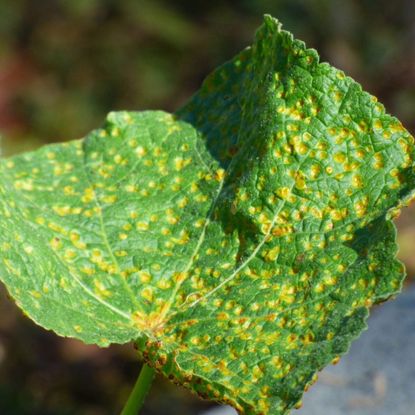

If you've ever tried growing hollyhocks in a hot, humid climate you've probably seen it—leaves with yellow spots on top and reddish brown pustules on the undersides that indicate hollyhock rust. If so, we have a few things for you to try before you despair of ever growing this lovely cottage flower successfully. Find out how to control hollyhock rust in this article.
What is Hollyhock Rust?
Caused by the fungus Puccinia heterospora, hollyhock rust is a disfiguring disease that infects members of the Alcea (hollyhock) family. It begins as yellow spots on top of the leaves with rusty pustules on the undersides. Over time the spots can grow together and destroy large sections of the leaves, causing them to die and drop off. At this point, the stems may also develop spots. Although the plant may not die, you may want to put hollyhocks with rust fungus out of their misery because of the severe disfigurement. Does hollyhock rust spread to other plants? Yes, it does! It only spreads to other members of the Alcea family, so most of your other garden plants are safe. There are mallow weeds that are members of the family that can act as a host reservoir for the disease, so it's best to keep weeds away from hollyhocks.
Treating Hollyhocks with Rust
Hollyhock rust disease occurs anywhere you find hot, humid temperatures. This is especially true in the southeast where these conditions persist throughout most of the summer. Below are some hollyhock rust treatments to try. Bear in mind that you'll have more success if you employ several of these strategies at once.
- When you first notice rust spots, pick off the leaves and either burn them or seal them in a plastic bag and discard them.
- Keep the soil around the plants free of debris, and keep the garden weed free.
- Spread a thick layer of mulch under the plants to prevent last year's spores from re-emerging.
- Water the soil rather than the leaves. If possible, use a soaker hose so the soil won’t splatter onto the leaves. If you must use a spray of water, direct the spray to the ground and water early in the day so that the leaves that get wet will dry completely before sundown.
- Make sure the plants have good air circulation. They look great growing up against a wall, but the air can't circulate around them, and moisture builds up.
- Cut down hollyhock plants at the end of the season and burn or bury the debris.
- Use fungicides if necessary. Chlorothalonil and sulfur are good choices. Apply them every seven to ten days or more often if it rains.
Gardening tips, videos, info and more delivered right to your inbox!
Sign up for the Gardening Know How newsletter today and receive a free download of our most popular eBook "How to Grow Delicious Tomatoes."

Jackie Carroll has written over 500 articles for Gardening Know How on a wide range of topics.
-
 Urban Beekeeping Guide: Top Tips For Raising Bees In The City
Urban Beekeeping Guide: Top Tips For Raising Bees In The CityUrban beekeeping can be a rewarding and appreciated pastime, but first be sure it’s legal in your city and learn the ropes of beekeeping.
By Mary Ellen Ellis
-
 2024 Plant Of The Year: Why Experts Say Philodendron Is The “It” Plant Of The Year
2024 Plant Of The Year: Why Experts Say Philodendron Is The “It” Plant Of The YearWe aren’t surprised that philodendron was designated the plant of the year. Versatile, easy-care and lovely, it’s the houseplant of the year 2024!
By Bonnie L. Grant
-
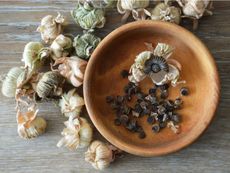 When And How To Harvest Hollyhock Seeds
When And How To Harvest Hollyhock SeedsWant to know how to harvest and collect hollyhock seeds? Click here to learn everything there is to know.
By Tonya Barnett
-
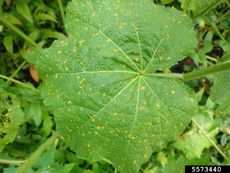 Treating Hollyhock Leaf Spot – Learn About Hollyhock Leaf Spot Control
Treating Hollyhock Leaf Spot – Learn About Hollyhock Leaf Spot ControlHollyhocks can be plagued by leaf spot diseases. Sanitation and proper irrigation generally keep the disease in check. Click here for more info.
By Mary H. Dyer
-
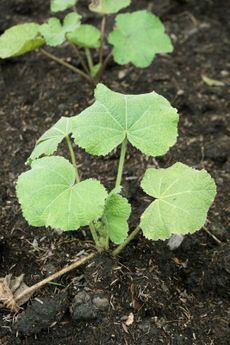 Hollyhock Pest Control: Are Hollyhock Nematodes Good Or Bad
Hollyhock Pest Control: Are Hollyhock Nematodes Good Or BadYour hollyhocks are stunted with poor flower production. They wilt easily and look yellowish. You're not sure why they’re are failing. Perhaps, it's because the trouble lies under the soil. You may have hollyhock nematode problems. This article can help with that.
By Laura Miller
-
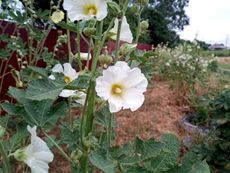 Hollyhock Anthracnose Symptoms: Treating Hollyhock With Anthracnose
Hollyhock Anthracnose Symptoms: Treating Hollyhock With AnthracnoseAnthracnose is one of the most destructive diseases of hollyhock plants. To learn about symptoms and management, click here.
By Mary Ellen Ellis
-
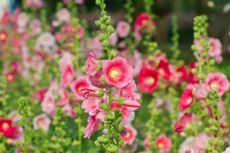 Hollyhock Flower Removal: Do Hollyhocks Need To Be Deadheaded
Hollyhock Flower Removal: Do Hollyhocks Need To Be DeadheadedHollyhocks are the showstoppers of the flower garden with towering blooms. To make the most of these gorgeous flowers, know how best to care for them. Do hollyhocks need to be deadheaded? Yes. Learn more in this article.
By Mary Ellen Ellis
-
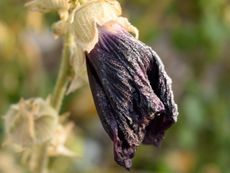 Hollyhock In Winter: How To Winterize Hollyhock Plants
Hollyhock In Winter: How To Winterize Hollyhock PlantsHollyhocks die back in winter, but you still need to protect the roots. Discover how to winterize hollyhock in this article so you can continue to enjoy their blooms next season.
By Bonnie L. Grant
-
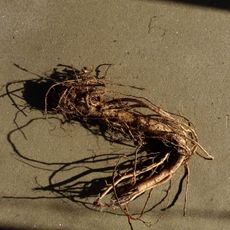 Bare Root Hollyhock Plants: Tips For Planting Hollyhock Roots
Bare Root Hollyhock Plants: Tips For Planting Hollyhock RootsGrowing hollyhocks in a sunny garden makes a statement. Planting hollyhock roots is the best way to start this large and attractive flower. Get tips on how to grow bare root hollyhocks in this article.
By Becca Badgett
-
 What Are Hollyhock Weevils: Alleviating Hollyhock Weevil Damage
What Are Hollyhock Weevils: Alleviating Hollyhock Weevil DamageEven though hollyhock plants are often extremely tough, hollyhock pest control will keep your bed filled with blooms for years to come, especially when it comes to weevils. Learn more about their control here.
By Kristi Waterworth